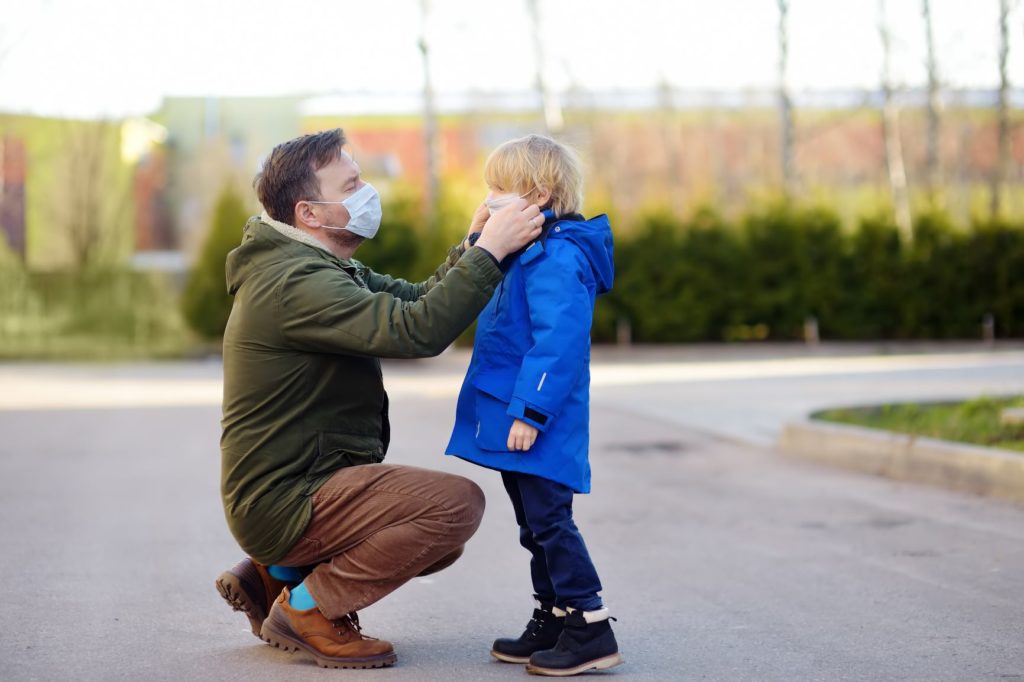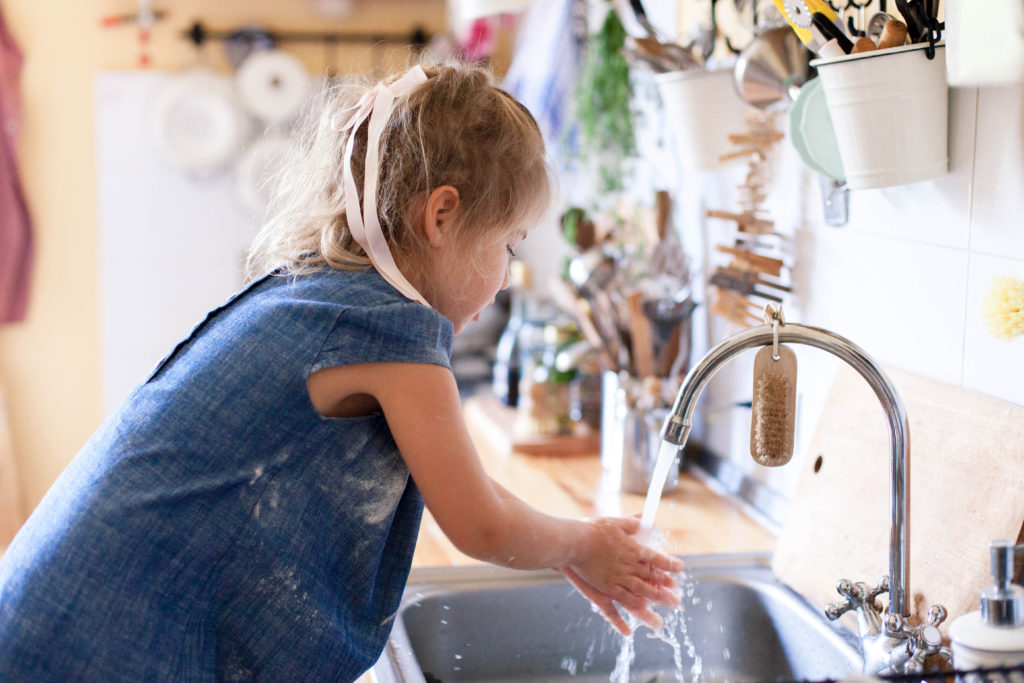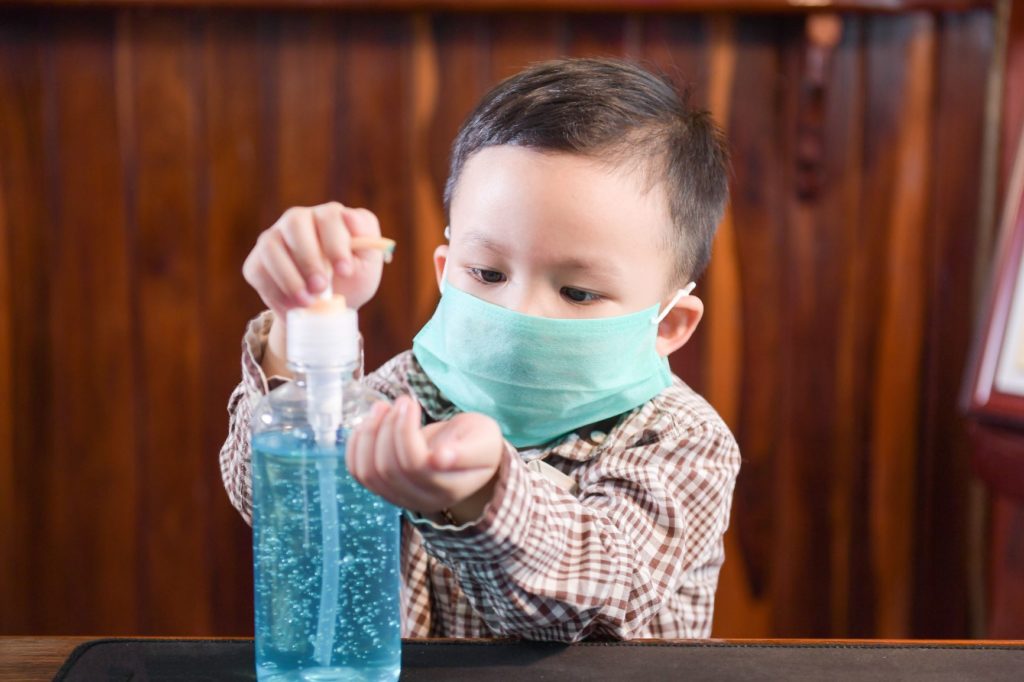
School districts and child care centers across the nation are gearing up to provide services to students during the coming school year. Some schools are setting up virtual classrooms, some are returning to in-person classes, and some are allowing parents to choose between in-person and distance learning for their kids.
As parents prepare their kids for the return to in-person learning opportunities, it is important to acknowledge that schools and child care centers may not look or feel the same as they did before coronavirus. They’ll be implementing new policies to reduce the spread of germs between staff and students, including new seating arrangements, hand hygiene stations, dedicated learning cohorts, and teachers wearing PPE.
That means kids will need more than new clothes and school supplies to be prepared for going back to school in 2020. They’ll be counting on their parents, guardians and other caregivers to help them develop new infection prevention skills and figure out what to do if they or someone they know gets sick.
For this edition of Parent like a Provider, we’ve put together a back-to-school checklist that parents can use to help prepare their kids for a return to in-person classes during COVID-19. Our list covers everything from basic school supplies and hygiene products to monitoring your child’s health status and emotional well-being as they return to classes during the coronavirus pandemic.
Back-to-School Checklist for Parents Amidst COVID-19
Keeping Your Community Safe
- Check Temperatures Daily – As your child returns to school, make a habit of taking their temperature daily to check for signs of fever that could indicate illness. Children with a temperature of 100.4 degrees or greater should stay home from school and be tested for COVID-19.
- Check for COVID-19 Symptoms Daily – Familiarize yourself with COVID-19 symptoms and do a basic screening of yourself and your child each day to make sure you’re feeling healthy.
- Keep Your Child Home if Unwell or Symptomatic – If you find that your child is unwell, do not send them to school. If your child attends school while unwell, they may transmit coronavirus to other members of the school community.
- Establish a Contact Person at your Child’s School or Center – Establish a point of contact at your child’s school or daycare center who you will contact if you suspect that your child is ill. If your child becomes symptomatic, notify that person as soon as possible so local health officials can begin contact tracing and limit the spread of infection.
- Identify Community Testing Sites – COVID-19 tests can be obtained at no charge at select pharmacies and health centers across the country. Find a center near you and have family members tested immediately if they present COVID-19 symptoms.
- Ask Your School about New COVID-19 Policies – Connect with school or child care center administrators and stay informed about new policies and procedures related to limiting coronavirus infections.
Preparing Your Child for Effective Infection Prevention

- Teach and Practice Healthy Hand Hygiene – Review the CDC guidelines for handwashing and practice them with your child. Kids should wash hands thoroughly using soap and lukewarm water for a minimum of twenty seconds.
- Vaccinate Your Child – Ensure that your child’s immunizations are up to date.
- Reinforce Physical Distancing – Talk to your child about the importance and benefits of physical distancing. Help them understand how to judge whether they are six feet apart from the nearest person. Play a physical distancing game with them so they can practice.
- Teach the Benefits of Face Coverings – The CDC recommends mask wearing to help slow the spread of COVID-19. Masks can prevent the spread of respiratory droplets that can transmit the virus. Talk to your kids about when and why they should wear a mask.
- Talk about Infection Prevention Precautions – Talk to your child about things they can do to reduce their coronavirus risks. Encourage them to wash and sanitize their hands more often, practice physical distancing, wear a mask when appropriate and avoid sharing objects with others.
- Plan for Your Child’s Transportation – Help your child plan to stay safe while traveling to and from the school or daycare. If your child takes the bus, talk to them about the importance of wearing their mask on the bus.
Personal School Items to Purchase
- School Supplies – Kids returning to school this fall should avoid sharing objects with each other, including school supplies. Check with your child’s school for a list of recommended supplies for the year.
- Lunchbox – Many schools and daycare centers are switching to distributing packaged lunches in the cafeteria to reduce the time kids spend in this communal setting. Packing a healthy lunch and snacks for your child can give you peace of mind that their meals came from somewhere safe and help them avoid the cafeteria line.
- Water Bottle – Kids can bring their own water to school instead of using a public water fountain, sink or refill station when they get thirsty during the day.
- Backpack Emergency Card – A backpack emergency card ensures that your child’s emergency contact info is always with them.
Infection Prevention Supplies for School
- Disinfectant Wipes – Show your child how to wipe down shared surfaces like desks and chairs before using them.
- Hand Sanitizer – Travel-sized dispensers fit into a side compartment on your child’s bag and can prove useful throughout the day.
- Masks/Face Coverings – Children over age 2 should be encouraged to wear a face mask. Talk to your child about why other people with breathing complications or asthma may not be wearing a face covering.
Helping with Face Coverings

- Choose the Right Face Coverings – Face coverings should fit comfortably on the face while completely covering your child’s mouth and nose. They should be tied at the back or secured with ear loops. Masks should be either machine washable or disposable after a single use.
- Label Face Coverings – Label your child’s face coverings with their full name to prevent them from being mixed in school PPE or masks that belong to other children.
- Help Your Child Practice Wearing a Mask – Help your child practice donning and removing their mask without touching the cloth part on the front. They should only touch the ear loops.
- Model Appropriate Face Covering Etiquette – When it comes to wearing a face covering, your kids will follow your example. Be sure to model the right behaviors by wearing your own face coverings in the appropriate settings.
- Help Your Young Child Build Comfort with Masks – Young children may be scared or hesitant about wearing a mask – this is normal! To make it seem less scary, offer your child praise for following the rules. You can also show them pictures of other children wearing masks, draw a mask on their favorite book or television character, or put a mask on their favorite stuffed animal.
Supporting Your Child’s Mental Health
- Talk to Your Child about Changes at School or Daycare – Talk to your child about the changes they will see when they return to school or daycare. Help them understand what to expect from the new policies and procedures. Reassure them that the new measures will help keep them safe in school, even if they feel like a big change.
- Ask Your Child about their Interactions at School or Child Care – As the school year begins, ask your child about their interactions with teachers, school staff and other students. Find out how they’re feeling about the new changes and offer support.
- Watch for Behavior Changes – Changes like difficulty concentrating, poor sleeping or eating habits, moodiness, clinginess and other behavioral changes can signal that your child is having trouble adjusting to in-person classes during coronavirus. Talk to their doctor if you’re concerned by changes in your child’s behavior.
- Stay Engaged – Stay in touch with administrators and teachers at your child’s school or child care center. Attend virtual meetings or activities and stay informed on how policies are changing. Make sure you’re on the contact list for the school’s emergency communications plan. Ask about programs that provide mental health services or help kids readjust to in-person classes during COVID-19.
- Model Healthy Self-Care Habits – Kids learn life skills, including stress management skills, by watching their parents. To help your child cope with stress, model healthy self-care routines that include getting enough sleep, exercising regularly, eating healthy and maintaining social relationships.
Learn to Parent like a Provider with Procare
As schools reopen during the coronavirus pandemic, parents must prepare their kids with the knowledge and skills to protect themselves and others while making the most of their time in school. We hope this back-to-school checklist helps support a smooth transition as your child returns to in-person classes this Fall.
Through our Parent Like a Provider series, Procare is committed to supporting parents whose child care arrangements were disrupted by coronavirus, and who are working to return their kids to classes safely this year.
Visit our resource center for more activities, techniques, and advice for parents during COVID-19.



